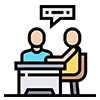
Start Your Programming Journey With Attitude Academy. This Certification Is Key To Cracking Your Dream Job In The IT World.
You must be a little familiar with Computer.






7 Days Money-Back Guarantee*
Take the final exam online to complete the Become Professional in Programming And Coding after which you will be able to download your certificate from Attitude Trainings




You must be a little familiar with Computer.

Watch the recorded & live videos to learn various concepts & get Live Sessions for Doubts Clearing

Test your knowledge through quizzes & module tests

Get hands on practice by doing assignments and project

Take the final exam to get certified in Become Professional in Programming And Coding
Start your programming journey with Attitude Academy. This certification is key to cracking your dream job in the IT world. Become proficient in the concepts of Programming in C, C++, strings and structures, functions, pointers, widely-used algorithms, and many more. Upskill in an elective coding language of your choice (Python or Java) based on your career goals.
Dynamic memory allocation in C
The concept of dynamic memory allocation in c language enables the
C programmer to allocate memory at runtime.
Dynamic memory allocation in c language is possible by 4 functions of stdlib.h header file.
malloc()
calloc()
realloc()
free()
C++ language provides the following types of operators:
MODULE-V FUNCTION, POINTERS, STRUCTURE & FILE HANDLING
MODULE-VI EXCEPTION HANDLING
MODULE-I INTRODUCTION & OBJECT
What is DNMS
Why we need Database management system
Importants of DBMS?
Objectives Of DBMS?
MODULE-II NEED & LOGICAL OF DBMS
The file based system
Limitations of file based system
The Database Approach
Three level architecture of DBMS or logical DBMS architecture
Mappings between levels and data independence
The need for three level architecture
MODULE-III PHYSICAL DBMS ARCHITECTURE
DML Precompiler
DDL Compiler
File Manager
Database Manager
Query Processor
Database Administrator
Data files indices and Data Dictionary
Commercial Database Architecture
Data Models
MODULE-V RELATIONAL & E-R MODELS
Introduction
Objectives
The Relational Model
Domains, Attributes Tuple and Relation
Super keys Candidate keys and Primary keys for the Relations
Relational Constraints 27
Domain Constraint
Key Constraint
Integrity Constraint
Update Operations and Dealing with Constraint Violations
Relational Algebra 31
Basic Set Operation
Cartesian Product
Relational Operations
Entity Relationship (ER) Model 38
Entities
Attributes
Relationships
More about Entities and Relationships
Defining Relationship for College Database
E-R Diagram 44
Conversion of E-R Diagram to Relational Database
MODULE-VI DATABASE INTEGRITY & NORMALIZATION
Introduction
Objectives
Relational Database Integrity
The Keys
Referential Integrity
Entity Integrity
Redundancy and Associated Problems 62
Single-Valued Dependencies 64
Single-Valued Normalization 66
The First Normal Form
The Second Normal Form
The Third Normal Form
Boyce Codd Normal Form
Desirable Properties of Decomposition 72
Attribute Preservation
Lossless-join Decomposition
Dependency Preservation
Lack of redundancy
Rules of Data Normalization 74
Eliminate Repeating Groups
Eliminate Redundant Data
Eliminate Columns Not Dependent on Key
MODULE-VII FILE ORGANISATION IN DBMS
Introduction 80
Objectives 81
Physical Database Design Issues 81
Storage of Database on Hard Disks 82
File Organisation and Its Types 83
Heap files (Unordered files)
Sequential File Organisation
Indexed (Indexed Sequential) File Organisation
Hashed File Organisation
Types of Indexes 87
Index and Tree Structure 97
Multi-key File Organisation99
Need for Multiple Access Paths
Multi-list File Organisation
Inverted File Organisation
Importance of File Organisation in Databases 103
MODULE-I INTRODUCTION OF SOFTWARE ENGINEERING
Software Processes
SDLC
SDLC Models
Requirement Engineering
MODULE-II MODELS
Waterfall Model
RAD Model
Spiral Model
V-model
Incremental Model
Agile Model
Iterative Model
Big-Bang Model
Prototype Model
MODULE-III SOFTWARE MANAGEMENT & SOFTWARE METRICS
Project Management
Activities
Project Management Tools
Software Management
Software Metrics
Size Oriented Metrics
Halstead's Software Metrics
Functional Point (FP) Analysis
Extended Function Point (EFP) Metrics
Data Structure Metrics
Information Flow Metrics
Cyclomatic Complexity
Case Tools For Software Metrics
MODULE-IV PROJECT PLANNING & RISK MANAGEMENT
Software Project Planning
Software Cost Estimation
COCOMO Model
Putnam Resource Allocation Model
Risk Management
Risk Management Activities
Project Scheduling
Personnel Planning
Software Requirement
Software Requirement Specifications
Requirements Analysis
Data Flow Diagrams
Data Dictionaries
Entity-Relationship Diagram
S/W Configuration
Software Configuration Management
SCM Process
Software Quality Assurance
Project Monitoring & Control
MODULE-V SOFTWARE QUALITY & SOFTWARE DESIGN
Software Quality
ISO 9000 Certification
SEICMM
PCMM
Six Sigma
Software Design
Software Design Principles
Coupling and Cohesion
Function Oriented Design
Object Oriented Design
User Interface Design
Coding
Programming Style
Structured Programming
MODULE-VI SOFTWARE RELIABILITY
Software Reliability
Software Failure Mechanisms
Software Reliability Measurement Techniques
Software Reliability Metrics
Software Fault Tolerance
S. Reliability Models
Software Reliability Models
Jelinski & Moranda Model
Basic Execution Time Model
Goel-Okumoto (GO) Model
Musa-Okumoto Logarithmic Model
Software Maintenance
Causes of Software Maintenance Problems
Software Maintenance Cost Factors

Watch the recorded & live videos to learn various concepts & get Live Sessions with Trainer for Doubts Clearing

Test your knowledge through quizzes & module tests

Get hands on practice by doing assignments and project

Take the final exam to get certified in Become Professional in Programming And Coding




You can post your doubts on the Q&A forum which will be answered by the teachers within 24 hours.
